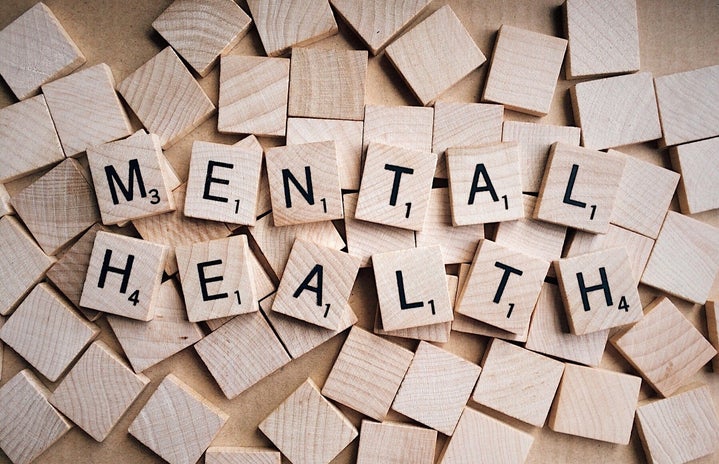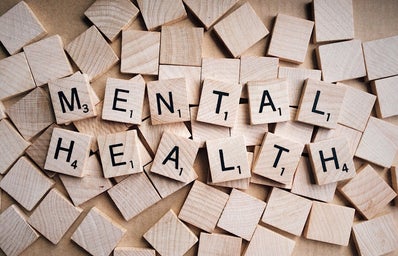If you didn’t already know, earlier this semester during Eating Disorders Awareness Week, Loyola’s Psychology Club, along with Psi Chi and Active Minds, hosted a week of events to help raise awareness on Loyola’s campus. Thankfully, I was able to pop into their roundtable discussion event towards the end of the week, which provided a lot of information about eating disorders and also gave people a chance to reflect on how our culture often contributes to the development of eating disorders.
At the event, a question was posed asking how we, as a society, should address the way in which social media platforms tend to normalize certain disordered eating behaviors. I usually don’t speak up during events like this, but I thought what I had to share needed to be heard. I told everyone that the most important thing we can all do is to continue to do exactly what the Psychology Club did with this event and others throughout the week: educate, educate, educate and raise awareness. I shared with them that, in my own experience, it wasn’t until I took a psychopathology course at Loyola when I realized certain things I accepted as “normal” in terms of eating habits (i.e. restricting calories, skipping meals, etc.) actually weren’t normal at all. The diet-obsessed culture we live in continues to spread misinformation, making it all the more important that we continue our efforts to raise awareness beyond Eating Disorders Awareness Week.
So, to start, here are five myths about eating disorders and the truth about each of them.
-
Eating disorders only affect women
Cultural biases are to blame for this myth. Although it’s true that more women than men are typically diagnosed with an eating disorder, men make up close to one third of all individuals who are diagnosed. Part of the reason why we assume men do not face this issue is because men are less likely to seek help for their disorder. The way in which men and boys are socialized in our culture creates a stigma that prevents them from asking for help. And in addition to that, historically, the diagnostic criteria for eating disorders has been geared more toward women than men in the past.
-
Eating disorders don’t develop until the teenage years
When I learned this in psychopathology, it was disturbingly surprising and heart breaking. We tend to think of teenagers being the youngest to develop certain eating disorders, but young children struggle with eating disorders too. An eating disorder has the potential to harm a child by disrupting their healthy growth and development. Recognizing the early signs of eating disorders in children can be extremely helpful in getting them the help they need early on, in order to prevent significant damage to their health.
-
If you’re not severely underweight, you don’t have an eating disorder
Although weight loss can be a symptom for some, it is not always the case for everyone struggling with an eating disorder. It is important that individuals know that this isn’t true because, if not, this misinformation could prevent people from seeking out the treatment they need, just because they don’t look ill. It is also important to understand that there are several different eating disorders people may face (e.g. bulimia nervosa, binge eating disorder, orthorexia, EDNOS, etc.)–not just anorexia nervosa–all of which have their own set of symptoms and diagnostic criteria.
-
People only develop eating disorders because they choose to
People assume that eating disorders are simply a matter of choice, or perhaps, just the result of someone’s poor choices, placing the blame on the individual themselves. However, such an assumption fails to acknowledge the biological, psychological and social risk factors that often lead to the development of an eating disorder. So, again, it’s absolutely imperative that we continue to learn all we can about eating disorders, and then share the truth with others, in order to correct the way in which our culture thinks about and talks about them.
-
Recovering from an eating disorder is simple
The recovery process is described as a cyclical, rather than linear, process. It can be complex, and certainly takes time. According to the Stages of Change Model, there are five stages that individuals move through as they recover from an eating disorder: Pre-Contemplation, Contemplation, Preparation, Action, and Maintenance. There are challenges to be met along the way, including relapse for some (which is sometimes referred to as the sixth stage of this model), but that is not to say that recovery isn’t attainable. Treatment is available and recovery is certainly possible.
This is just a start to what I hope will become a movement, or widespread effort to change the diet culture we have all been accustomed to for far too long. To continue this effort, here are different opportunities to help raise awareness and to continue your own journey to learn more in order to make a difference.



